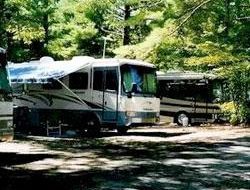Many RVs rely on batteries to provide electrical power when no other power source is available. Therefore, it’s important to maintain proper RV battery care. There are two types of batteries used in the RV industry: lead acid flooded and AGM (Absorbent Glass Mat). The most commonly used are the lead acid flooded configuration.
Wet cell batteries require regular maintenance, fluid level checks, water top ups and periodic external cleaning. AGM’s, though substantially more expensive, are virtually maintenance-free, as they are a sealed unit. They also are capable of a longer life cycle.
Batteries are sized, or rated, in ampere hours (A.H.). Some RVs use 12-volt deep cycle batteries while others may use 6-volt units wired in series to deliver 12 volts. 12-volt batteries are wired parallel – connected positive to positive and negative to negative. Two batteries rated at 220 A.H. would deliver 440 A.H. Those using 6-volt batteries are wired in series – pairs connected negative to positive, positive to negative. If these were two 220 A.H. at 6 volts, they would then be 220 A.H. at 12 volts.
So let’s look at the most common one, the wet cell. This type of battery is cost efficient for most RV applications. It does, however, need regular service, perhaps every month. The acid level slowly goes down as gases and fluid are discharged during the charge cycle. As well as needing to be topped up with distilled water, the discharged gas mist causes a buildup of corrosive matter that accumulates at the positive post. It will also lead to corrosion of the metal battery shelf and enclosure if not kept cleaned regularly. There are cleaning products designed especially for this task which make it much easier. This corrosive discharge that is emitted from the battery cells can be reduced somewhat by using a small amount of mineral oil that is poured into each cell. Using only a couple of ounces per cell, the oil floats on top of the water/acid solution and tends to defuse the boiling action during the charge cycle. There are special products sold for this purpose.
Recharging the batteries, wet cell or AGM, should be done when they have dropped to 50% of a full charge. This can be measured by observing the rested state of the voltage output or by verifying the specific gravity of the acid/water. A fully charged 12-volt battery at a rested state reads 12.7 volts or 1.265 S/G, while at 50% has 12.2 volts at 1.190 S/G. Draining a battery below this point can shorten the product expected life.
Now, I used the term “Rested State”. It is important to understand that a battery under load or charge does not display its real voltage. In some cases a panel reading of as low as 11.8 volts may very well be 50%. You just need to know your rig. Enjoy.






